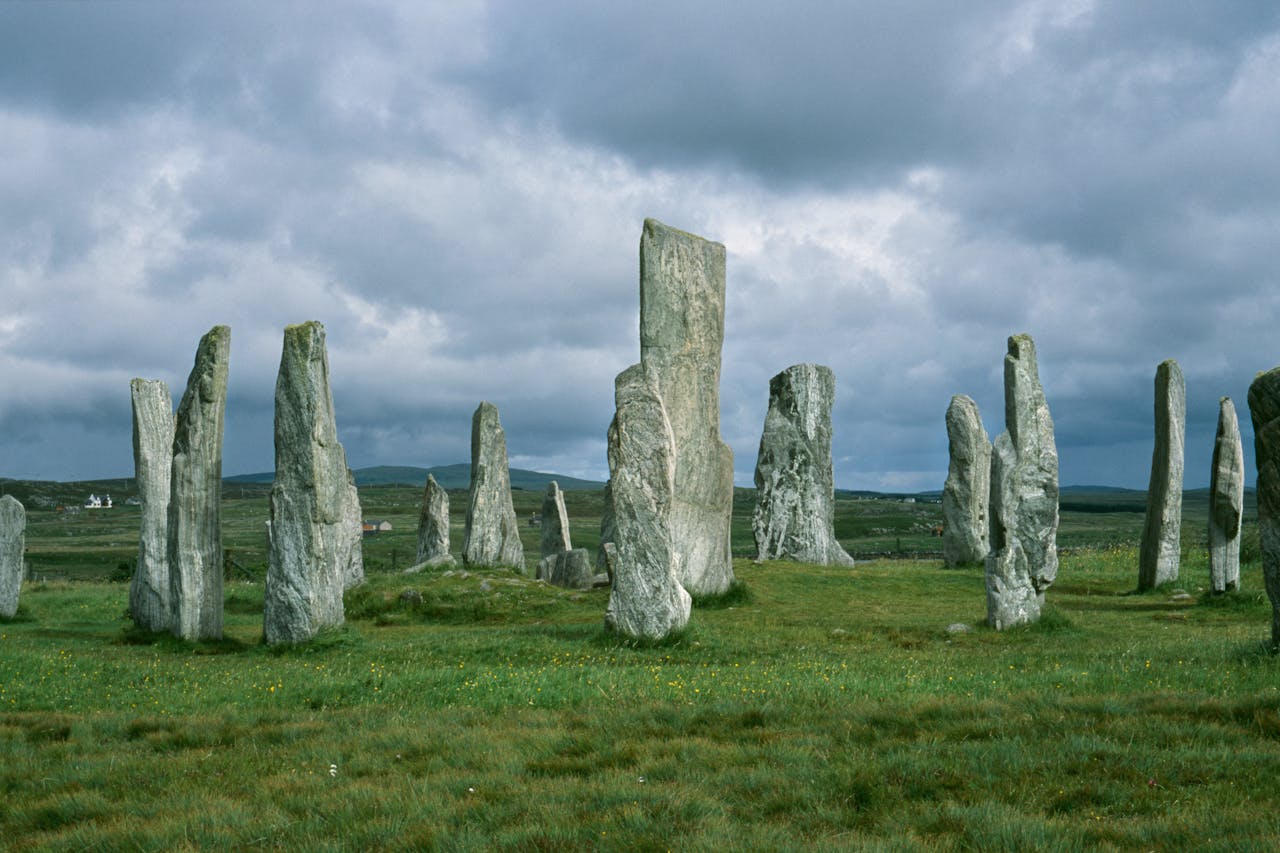Scattered across the Argyll region, these megalithic structures, including stone circles, standing stones, and cairns, date back to the Neolithic and Bronze Ages, some being over 5,000 years old. They hold immense archaeological, cultural, and spiritual significance, often linked to ancient rituals, burial practices, and early human settlements.
Historical Context
The standing stones in Argyll are believed to have been erected by early communities as part of their spiritual and ceremonial practices. While their exact purpose remains speculative, many historians and archaeologists suggest they were used for ritualistic, astronomical, or funerary purposes. Their alignment with the sun and moon during solstices and equinoxes indicates they likely played a role in tracking celestial events, which would have been vital for agricultural societies.
Famous Sites
Argyll is home to several notable standing stone sites, each offering a unique glimpse into Scotland’s prehistoric past. Some of the most well-known include:
- Kilmartin Glen: Kilmartin Glen is one of the richest archaeological landscapes in Scotland, boasting over 350 ancient monuments within a small area. The site contains numerous standing stones, stone circles, burial cairns, and rock carvings, dating back thousands of years. The Temple Wood stone circles and the Nether Largie standing stones are among the most famous in the glen. The standing stones are believed to be part of a ritual landscape, possibly connected to burial practices and ancestor worship.
- Dunchraigaig Cairn: Situated near Kilmartin, Dunchraigaig Cairn is part of a wider complex of ancient monuments and burial sites. Though primarily a burial cairn, the nearby standing stones are aligned in a way that suggests astronomical significance, with possible links to the solstices.
- Loch Craignish Standing Stones: These stones are located near the village of Ardfern and are set against the dramatic backdrop of Loch Craignish. The site consists of a few standing stones, which are thought to have had ritual or ceremonial importance, possibly related to local clans or early settlers.
- Auchagallon Stone Circle: Located on the Isle of Arran in Argyll, this stone circle is a smaller but notable site with 15 large standing stones arranged in a circle. The purpose of the circle remains unclear, but it likely served as a gathering place for ancient rituals or burials.
Cultural and Spiritual Importance
Many of the Argyll standing stones are associated with ancient myths, legends, and folklore. Local stories often describe them as places of ancient magic or connect them to tales of giants, fairies, or ancient warriors. In modern times, they continue to attract those interested in spirituality, particularly those drawn to earth-based and druidic traditions, due to their perceived mystical qualities.
Archaeological Discoveries
Archaeologists have uncovered many interesting artifacts and carvings near these standing stone sites, including burial remains, pottery, and tools, offering insights into the lives of the people who erected them. The carvings found on some stones, such as cup-and-ring marks, are among the most mysterious features, with their meaning still debated among researchers. Some believe they had religious or symbolic purposes, while others suggest they could have been early maps or a form of communication.
Tourism and Preservation
Today, the standing stones in Argyll are popular tourist attractions, drawing visitors interested in Scotland’s prehistoric past. Kilmartin Glen, in particular, is a key destination for those wanting to explore ancient Scottish history. There are visitor centres and guided tours that offer deeper insights into these sites and their historical significance. Efforts are also being made to preserve these ancient monuments, ensuring they remain a part of Scotland’s heritage for future generations to study and appreciate.
The standing stones of Argyll provide a powerful connection to Scotland’s ancient peoples, their beliefs, and their understanding of the world around them. They remain enigmatic symbols of the country’s rich prehistoric landscape, standing tall in the same places they have occupied for millennia.


